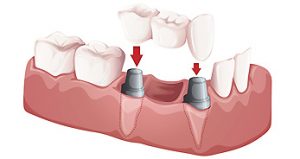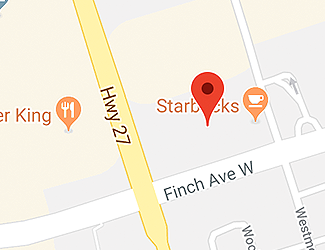
Dental Crown and Bridge
Dental crowns are caps attached to damaged teeth to restore or improve their physical appearance and internal structure. Damages due to decay, a crack or a chip may be fixed using dental crowns. They work by following the teeth’s shape and structure to bring them back to their original appearance or reinforce their strength that may have been compromised due to the damage. They are also carefully made so that they blend naturally with the rest of the teeth and the bite. They are usually used when the damages to the teeth are so severe that they are unfixable using fillings, dental bonding or porcelain veneers.
Dental crowns are often used
- To restore the appearance of a broken, worn, decayed or chipped tooth
- To strengthen or protect a tooth
- To cover or fill a large area damaged by decay that may not be fixed using a filling
- To fix the shape or color of a tooth
- As the top part of a dental implant
- To make a small tooth resemble the same size as the other teeth
- To fix the alignment of your bite
There are different kinds of dental crowns based on materials used. Consult our dentists to know which one is the best for you.
- Stainless steel
- Metal
- Porcelain fused to metal
- All porcelain
- Ceramic
- Resin
- Solid zirconia
How are dental crowns attached?
Before anything else, the dentist needs to treat any existing problems of the teeth, especially on teeth that have suffered severe decay. Decayed areas should be removed and if needed, a root canal treatment should be performed.
The remaining portion of the teeth may be scaled down or filled, depending on the shape left by the damage, to allow the crown to fit perfectly. The dentist will then make impressions of the teeth that will be used by the laboratory to make the customized crowns. A temporary crown will be used to cover your tooth while your permanent crowns are not yet ready.
Your crowns will be ready within a week or two. On your next visit, the temporary crown will be removed and the permanent one will be attached using a very strong adhesive. The teeth will then be buffed until the texture, shape and bite are perfect.
Dental Bridges
Dental bridges are cosmetic dental fixes that literally bridge the gap between teeth. They may also be used to top off dental implants.
There are three types of dental bridges:
A traditional dental bridge has three parts – one or more artificial teeth, called pontic, and two dental crowns on both ends that anchor the whole bridge in place. The dental crowns are placed on top of both teeth sandwiching the gap. They are usually made out of porcelain fused to metal or ceramic.
A cantilever bridge makes use of only one crown to anchor the bridge. It is rarely seen and recommended these days because they may be easily damaged if used on the molars.
A Maryland bridge attaches the pontic to adjacent teeth using two small wings. It is generally used bridge a gap from a single missing tooth but can also replace two or more.
A removable bridge looks like a portion of a denture. It has a base that resembles the appearance of the gums and is attached to adjacent teeth using metal hooks.
How are dental bridges attached?
Dental bridge attachment follows almost the same procedure as attaching dental crowns. The teeth where the dental crowns will be placed will need to be resized or reshaped. Impressions will also be made and sent to the laboratory that will be making the crowns and the pontic. The crowns will be cemented in place and the pontic will be attached to the gums also.







